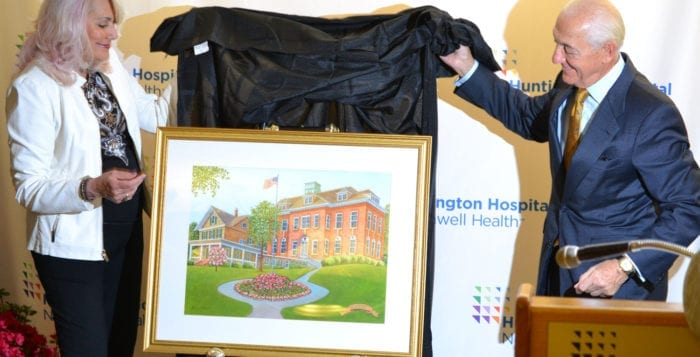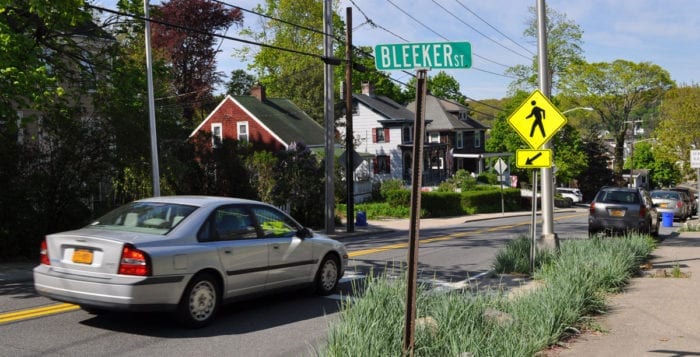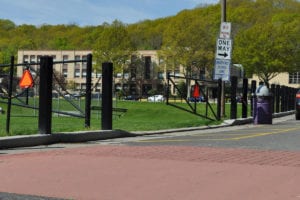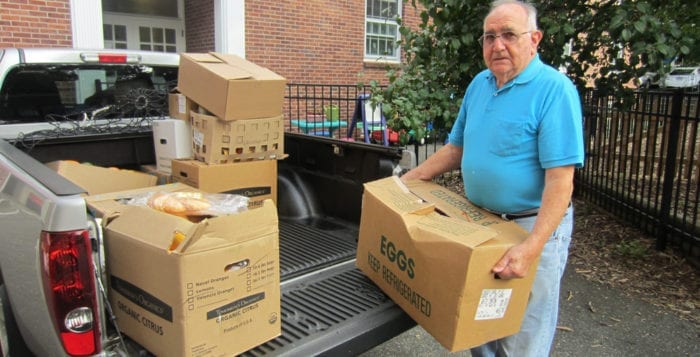People don’t often get to celebrate a 100th birthday, but on May 5 the Huntington Hospital community came together to do just that.
The hospital cared for its first patient in May 1916. To commemorate the centenary, staffers unveiled a commissioned painting of the original, smaller facility and a display of photos and artifacts that spanned the 100-year history.

“This is a big day,” Huntington Hospital Board of Directors Chairman William Frazier said in the hospital’s main lobby prior to the unveiling. “You think back 100 years and how modest this institution was — now think where it is today.”
Artist Jo-Ann Corretti was commissioned by the hospital to create a likeness of the building. She used acrylic paint to do the job, which took her about three months.
“They gave me all of these old pictures, anything they could find for me to work from,” Corretti said after the painting was revealed. “I had to lay them all out and I had to take a little from here and a little from there.”
Hospital Executive Director Gerard Brogan spoke about the institution’s mission and how it has remained constant despite many changes to the building and surrounding area.
“I think it’s important just to think about what was the genesis of the hospital,” Brogan said. “It was a 70-year-old woman who was about 5-foot-1 [and] decided that this community needed to have the very best in medical care; care that rivaled any where else in the New York City area or anywhere else on Long Island. That was the spirit that started Huntington Hospital. It was not just to have a hospital, but to have a facility that served the community and provided them the best care that you could find anywhere.”

Brogan also detailed many of the awards and accolades the hospital has received in recent years, which he credited to the dedicated and caring staff.
“You do not need to leave your area to go into New York City to get outstanding, cutting-edge care,” Brogan said. “That is the commitment of this institution and all of the people that work in it. Everybody here is titled ‘caregiver,’ because everybody impacts the patient experience.”
The Huntington Historical Society helped to amass artifacts, like obstetrician/gynecologist equipment from the 1930s and a bill from 1960 with substantially lower prices than today, to be displayed around the hospital’s lobby.
The painting will be auctioned off in November at the hospital’s annual benefit gala. Prints are also for sale.























